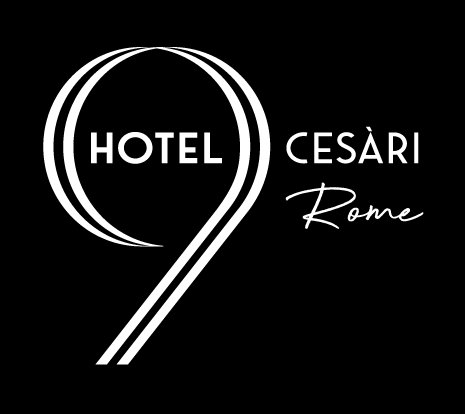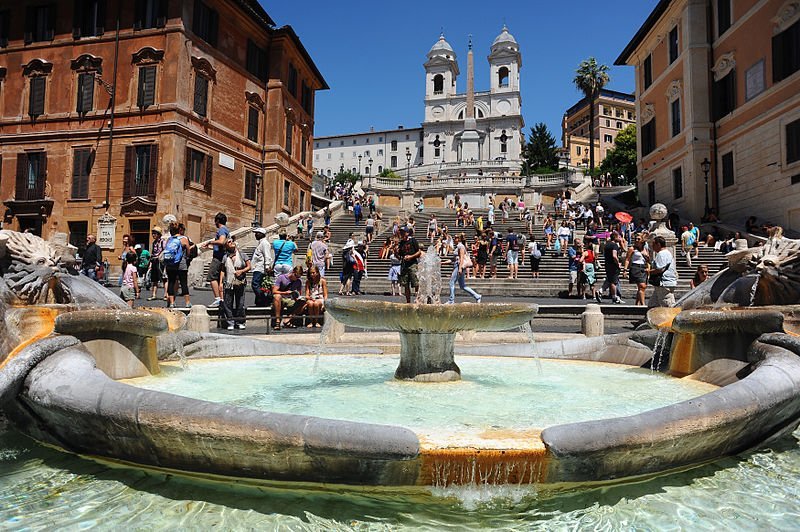Piazza Di Spagna
The piazza is well known for the many steps on which Romans gather. It's also very close to another of the city's landmarks: Piazza del Popolo, created by Giuseppe Valadier in the late 18th century. One of the city's largest squares, it was designed to give Rome a little openness.
The 9 Hotel Cesàri is ideal for visiting the Piazza di Spagna
Valadier decided to retain several essential elements: the two churches at the entrance to Via del Corso, the people's door and the Central Obelisk. Near Piazza di Spagna, you'll also find the Villa Medici, built in the 1570s and home to the Académie de France since 1803. Under Louis XIV, this establishment served as a place for talented young Frenchmen to learn the traditions of Antiquity and the Renaissance. Today, the Villa Medici is open to the public and offers a wide range of temporary and permanent exhibitions, as well as a tour of the gardens. Our staff can advise you on the various tours available, so don't hesitate to ask us when you make your reservation.
Piazza di Spagna is easily accessible by public transport. The nearest metro station is Spagna, on line A, which links the square to other popular tourist attractions in Rome, such as the Colosseum and the Vatican.
As always, we strongly advise you to get there on foot, as the 9Hotel Cesàri is a 10-minute walk away, allowing you to take the famous Via del Corso or even make a detour to the Trevi Fountain.
History of Piazza di Spagna
The Piazza di Spagna is one of Rome's most famous squares. Located in the city's historic district, it is surrounded by fashion boutiques, restaurants and tourist attractions. This picturesque square is also famous for the Trinità dei Monti staircase and the Barcaccia fountain.
The history of Piazza di Spagna dates back to the 17th century, when Pope Urban VIII Barberini commissioned the construction of the Barcaccia Fountain. The square's name derives from the Spanish Palace, the Spanish embassy to the Holy See, which was located in the square until the end of the 19th century.
The Barcaccia Fountain is a boat-shaped fountain built in 1627 by sculptors Pietro and Gian Lorenzo Bernini. The fountain is a unique work of art, which has inspired many artists and writers, including the German poet Johann Wolfgang von Goethe.
The stairs of the Trinità dei Monti are another famous attraction in the Piazza di Spagna. The stairs were built in the late 16th century to link the church of the Trinità dei Monti, located on the hill of the same name, to the piazza below. The staircases were financed by King Louis XII of France, who had a residence nearby.The staircase's 135 steps were restored in 1995.
The stairs are also a popular attraction in the Piazza di Spagna. The steps offer panoramic views of the square and the city of Rome, making them a prime location for tourists looking to take photos or simply enjoy the view.The stairs have also been immortalized in several films and literary works, contributing to their popularity.
A place for luxury shopping
Piazza di Spagna is also a must for luxury shopping. The streets around the square are famous for their high-end boutiques, including Valentino, Prada and Gucci.
The luxury boutiques of the Piazza di Spagna attract tourists from all over the world. Via Condotti, the square's most famous street, is lined with boutiques, jewelry stores and souvenir stores. Visitors can find high-quality goods, but prices are often very high. The piazza's stores are particularly popular during sales, when prices are more affordable.
Piazza di Spagna in Italian culture
The Piazza di Spagna is a popular venue for cultural events and festivals. Rome's Carnival takes place here and in the surrounding streets every year. Concerts and dance performances also take place in the square, offering visitors a unique cultural experience.
The Piazza di Spagna is also a landmark of Italian culture, often cited in literature, music and film.
Many Italian writers have referred to the Piazza di Spagna in their works. For example, Italian poet Giuseppe Gioacchino Belli wrote a poem entitled "Piazza di Spagna" in which he describes the square as a meeting place for people from all walks of life. Italian author Federico Fellini also evoked the Piazza di Spagna in his films, notably in "La Dolce Vita" and "Roma".
Italian music has also paid tribute to the Piazza di Spagna. The song "Piazza di Spagna" by Italian singer Ornella Vanoni evokes the square as a romantic and enchanting place. Italian composer Nino Rota also referred to the square in his famous score for the film "La Dolce Vita".
Finally, the Piazza di Spagna is also an important location for contemporary Italian artists. Italian photographer Franco Fontana immortalized the square in one of his most famous works, entitled "Rome, Piazza di Spagna". Contemporary Italian artist Francesco Vezzoli has also used the Piazza di Spagna as a backdrop for some of his video artworks.
The Piazza di Spagna is Rome's historic and picturesque square, offering a variety of tourist attractions, luxury boutiques and traditional restaurants. Visitors can learn about the city's history, attend cultural events and enjoy a unique shopping experience. The Barcaccia fountain and the Trinità dei Monti stairs are two of the square's most famous attractions, which have become emblematic symbols of Rome. The Piazza di Spagna is a must for anyone visiting Rome, whether to stroll, relax or learn about the city's history.


